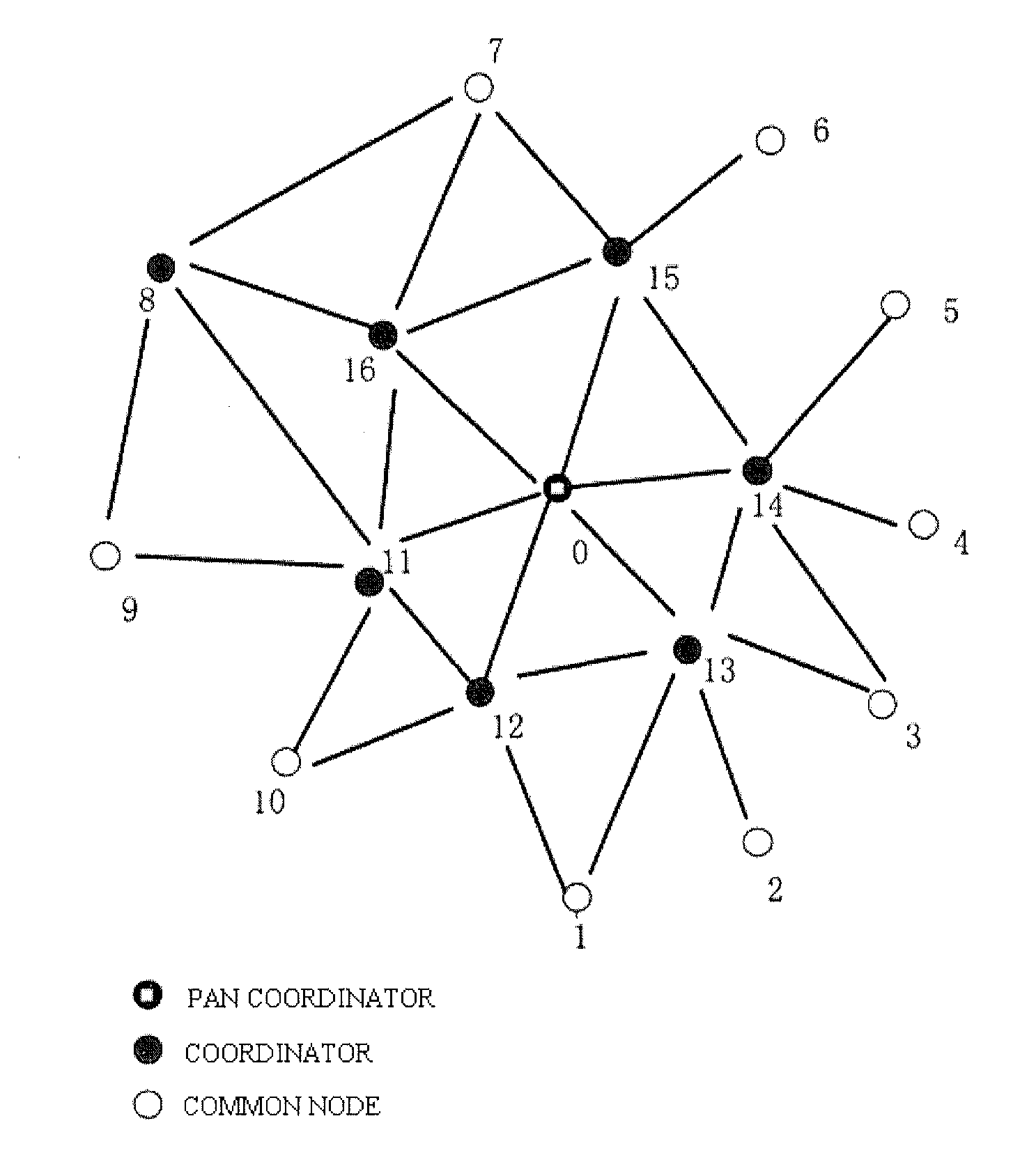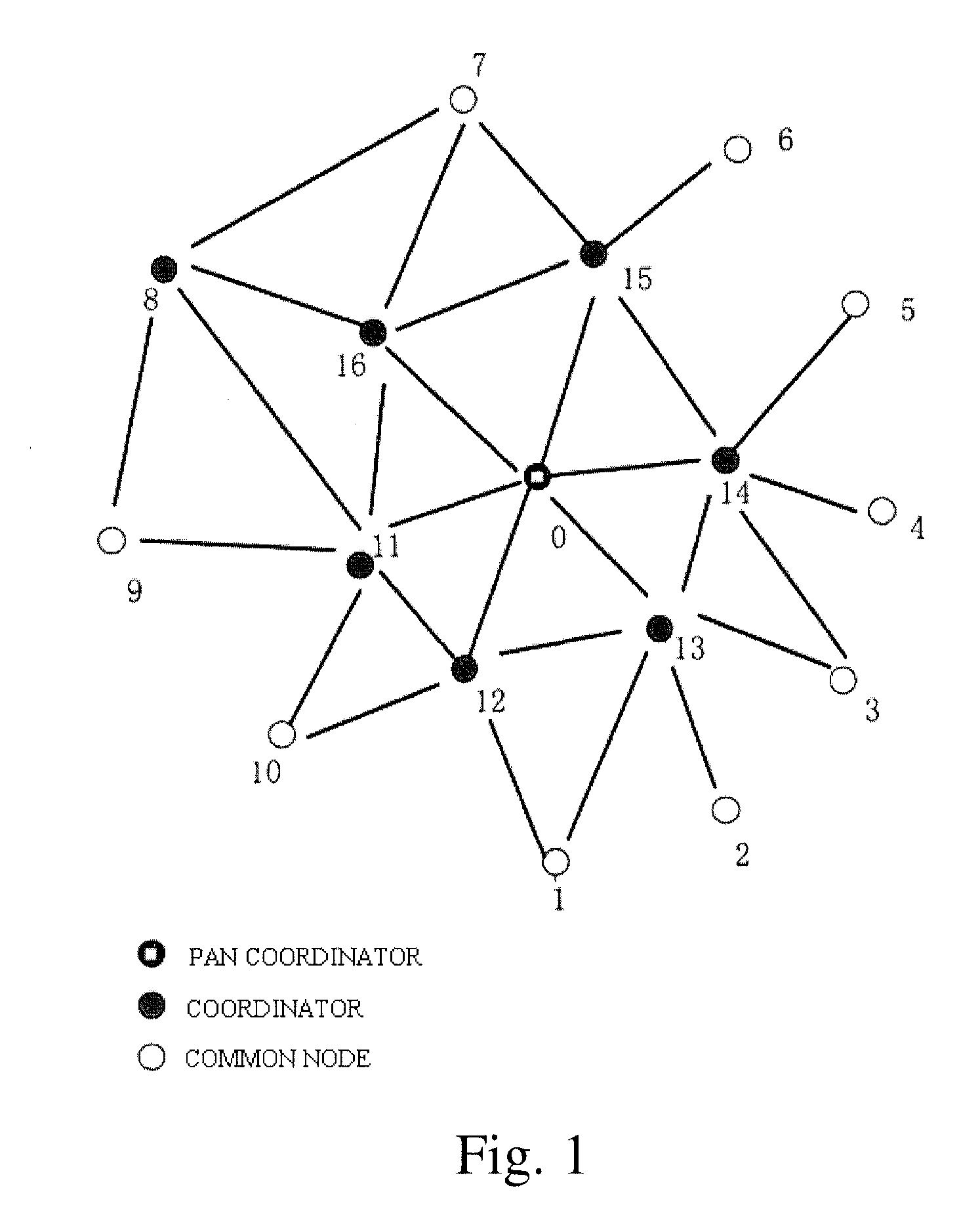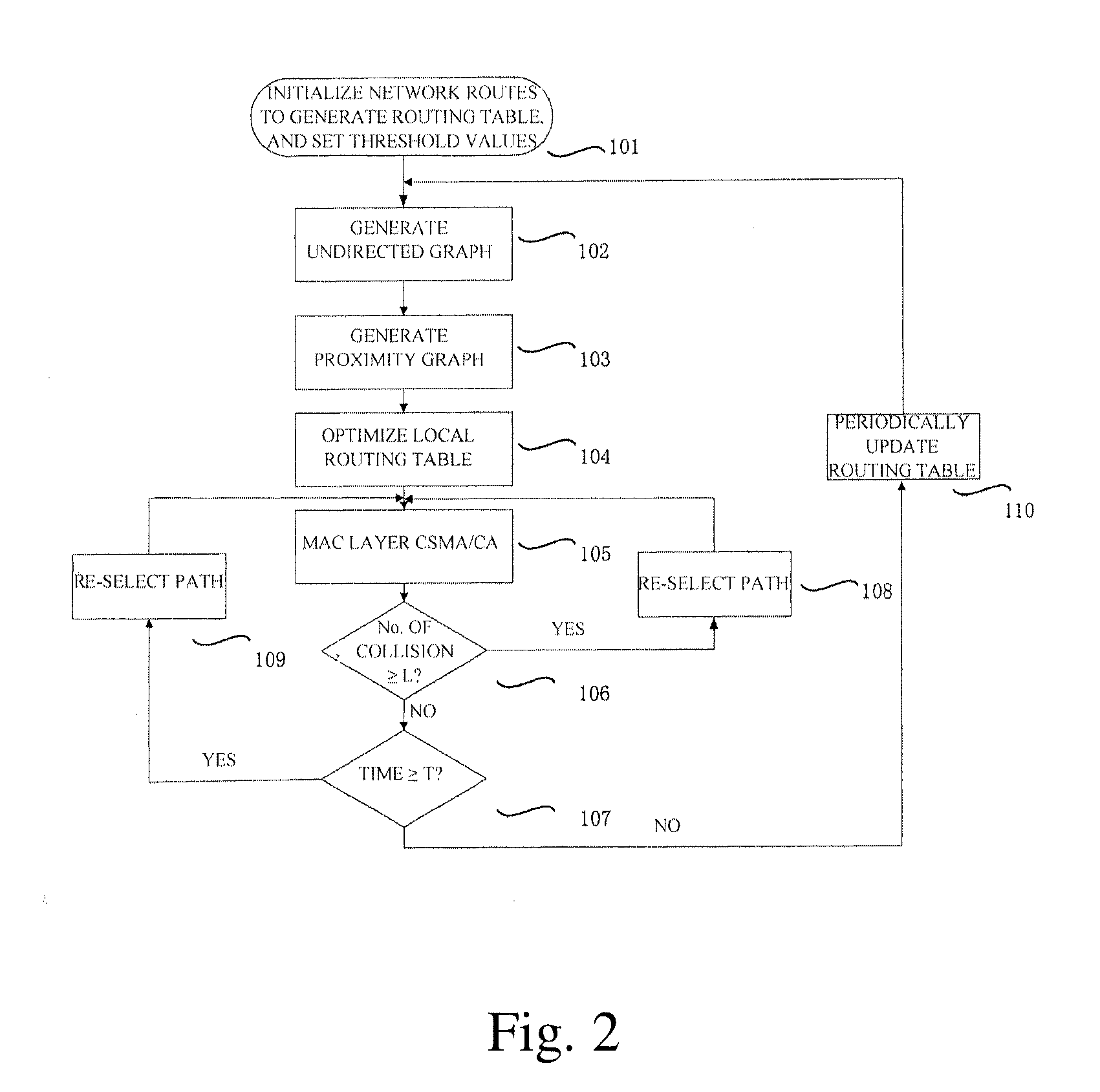Wireless communication network and adaptive routing communication method thereof
a communication network and wireless communication technology, applied in the field of wireless communication networks, can solve the problems of affecting the performance of the entire network, the battery is charged or replaced, and the improvement over the network is relatively limited, so as to save power consumption, ensure the effect of time effective transmission of data packets, and improve network performan
- Summary
- Abstract
- Description
- Claims
- Application Information
AI Technical Summary
Benefits of technology
Problems solved by technology
Method used
Image
Examples
Embodiment Construction
[0047]A wireless sensor network conforming to the IEEE 802.15.4 Standard is taken as an example below to describe the principles and embodiments of the present invention. However, it will be easily appreciated by those skilled in the art that the principles of the present invention as set forth below are not only applicable to the wireless sensor network, but to other wireless communication networks as well, as long as they have topological structures similar to the network structure described below. It is possible for a person skilled in the art to conceive of specific embodiments for implementing the principles of the present invention in other wireless communication networks based on the contents herein disclosed without any creative effort to be made, which embodiments thus should fall within the protection scope claimed in the claims of the present application.
[0048]In view of the balance between power consumption of the network and guarantee of time effectiveness of the networ...
PUM
 Login to View More
Login to View More Abstract
Description
Claims
Application Information
 Login to View More
Login to View More - R&D
- Intellectual Property
- Life Sciences
- Materials
- Tech Scout
- Unparalleled Data Quality
- Higher Quality Content
- 60% Fewer Hallucinations
Browse by: Latest US Patents, China's latest patents, Technical Efficacy Thesaurus, Application Domain, Technology Topic, Popular Technical Reports.
© 2025 PatSnap. All rights reserved.Legal|Privacy policy|Modern Slavery Act Transparency Statement|Sitemap|About US| Contact US: help@patsnap.com



